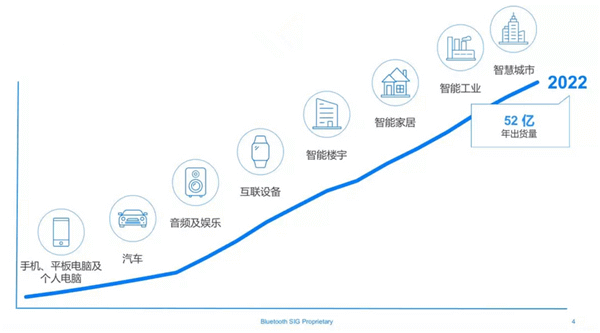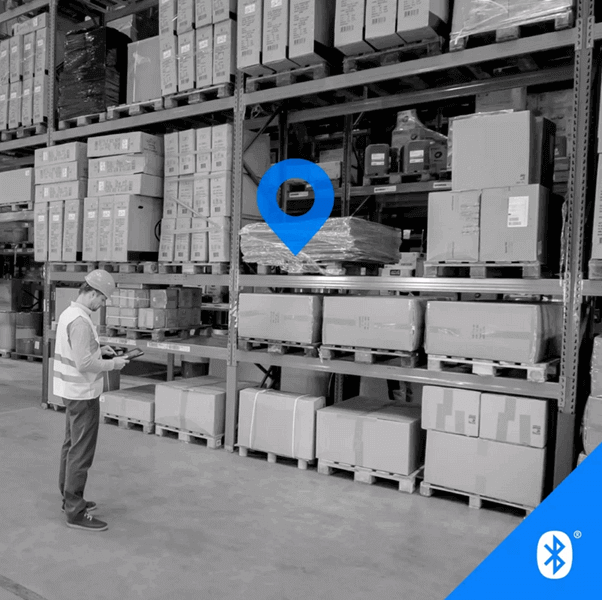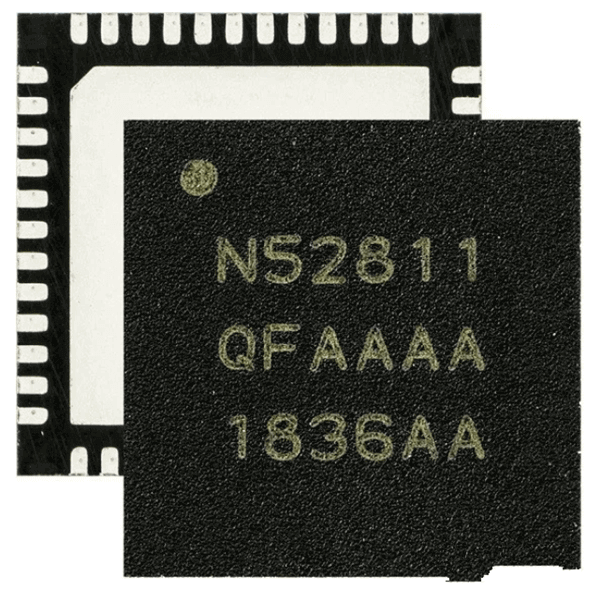The "cm-level" positioning of the Bluetooth 5.1 core standard has come, what chips are currently available?
At present, Bluetooth technology is used in applications such as smart phones, tablets, automobiles, audio entertainment devices, smart homes, smart buildings, and smart industries. According to ABI Research's report, shipments of Bluetooth products in 2008 were 4 billion, and it is expected to grow to 5.2 billion by 2022.
Of course, the biggest market for Bluetooth products is still in the audio and entertainment market, but with the introduction of the Bluetooth 5.0 standard and the addition of mesh functions, Bluetooth technology has also developed in emerging areas such as smart buildings and smart factories. According to data provided by the Bluetooth Technology Alliance, more and more buildings are now deploying Bluetooth solutions for asset tracking, personnel tracking, navigation and space utilization, and Bluetooth location services are growing rapidly.
At the media conference held by the Bluetooth Technology Alliance in Beijing on February 21st, the Bluetooth Technology Alliance Asia-Pacific developer relationship manager predicted that by 2022, Bluetooth shipments based on location-based services will reach 400 million.
Shipments of Bluetooth products are expected to reach 5.2 billion in Bluetooth products by 2020.
The reason for this optimistic estimate is mainly because of the Bluetooth specification of the Bluetooth technology specification launched by the Bluetooth Technology Alliance in January this year. The new Bluetooth core specification adds "direction finding", which helps the device. Clear the direction of the Bluetooth signal to achieve a centimeter-level position accuracy Bluetooth positioning system.
How is the "centimeter-level" positioning of the new Bluetooth 5.1 core specification implemented?
Currently, location-based Bluetooth service solutions are generally divided into two categories: proximity-like solutions and location-system solutions. The proximity solution uses Bluetooth to interpret when two devices are close to each other and an approximation of the distance. This category also includes item finding solutions (such as personal property tags) and Land of Interest (PoI) information solutions (such as proximity aware Beacon).
The proximity and location type solutions using the Bluetooth technology are mainly based on the RSSI (Received Signal Strength Indication based on the received signal strength indication). The iBeacon positioning technology is used as an example. Generally, the Beacon transmits signals, and the Bluetooth device locates and receives feedback signals. . When the user enters, exits, or squats in the area, Beacon's broadcast has the ability to propagate, and the distance between the user and the Beacon can be calculated (calculated by RSSI). It can be seen that as long as there are three, the positioning accuracy is only Can go to the meter level.
However, after the Bluetooth 5.1 core specification introduces the "seeking function", this precision can be increased to "centimeter level".
This is because the homing function of Bluetooth 5.1 is mainly composed of two types of positioning elements, namely, Angle-of-Arrival (AoA) and Angle of Departure (AoD).
The angle of arrival is a technique for obtaining the orientation and distance of the transmitter and the object by triangulating the direct arrival direction of the transmitter and receiver, mainly for RTLS (Real Time Positioning System), item tracking and landmark information.
The starting angle is also the use of signal phase difference technology, mainly for indoor positioning system (IPS), this direction finding technology is suitable for indoor items management, logistics, warehousing and so on.
Real Time Location System (RTLS) and Indoor Positioning System (IPS) are two of the most popular Bluetooth location systems.
The Bluetooth RTLS solution tracks critical assets within the facility, such as identifying pallets, forklifts and workers in the warehouse, as well as the location of ultrasound machines and patients in the hospital, to optimize emergency response times and ensure safety.
In the RTLS solution, by installing battery-powered low-power Bluetooth transmitters ("tags") on the primary assets, these tags send their current location and received signal strength to Bluetooth reception at a fixed location within the facility. ("Locator"). In this way, facility managers obtain location information for tracking assets.
With the addition of a new homing feature, the position engine in the RTLS solution can receive signal strength and label orientation and use this data to increase position accuracy to centimeters, allowing the plant to track logistics locations more accurately while monitoring worker locations. And warn workers before they enter an unsafe work area.
The application of Bluetooth positioning system in asset tracking.
What Bluetooth 5.1 standard products are available?
So which Bluetooth chips can support the Bluetooth 5.1 core specification? Since the Bluetooth 5.1 core specification has just been released, there are still many chips on the market that support this specification, but there are still some. For example, Nordic's new nRF52811 SoC is a chip that supports Bluetooth 5.1 homing function.
Nordic's nRF52811 SoC is a chip that supports Bluetooth 5.1 homing
The nRF52811 is a full-featured wireless connectivity solution that supports Bluetooth 5.1 homing and a range of popular low-power wireless protocols, such as Thread and ZigBee, for applications such as gateways for smart homes and industrial products.
This SoC device extends Nordic's popular nRF52 family of platforms, combining the low-cost features of the Nordic entry-level nRF52810 SoC with the multi-protocol support of the popular nRF52832 and high-end nRF52840 SoC. The nRF52811 is also the first Bluetooth 5.1-capable product in the Nordic low-power wireless connectivity portfolio.
The Nordic nRF52811 SoC includes a multi-protocol 2.4GHz RF module with 4dBm output power, -97dBm sensitivity (in Bluetooth 5 1Mbps mode), a 64MHz 32-bit Arm® CortexTM M4 processor, and 192kB Flash and 24kB RAM memory. . The nRF52811 SoC also includes a variety of analog and digital interfaces.
In addition to nRF52811, Dialog Semiconductor's DA1469x series, launched in February this year, also supports the Bluetooth 5.1 core specification, which uses the angle of arrival and exit angle functions for precise positioning. The DA1469x opens up new opportunities for precision indoor positioning equipment such as building access and remote keyless unlocking systems. However, in the implementation of the homing function, the antenna design is crucial, and Dialog will provide an antenna reference design.
In addition, the Bluetooth Technology Alliance is also updating the Bluetooth technology alliance tool Launch Studio for verifying new Bluetooth products to support the homing function.
The Bluetooth Technology Alliance also revealed that in fact, some vendors can upgrade their chip solutions to support the Bluetooth 5.1 core specification through software upgrades. For example, Silicon Labs, after the Bluetooth Technology Alliance announced the launch of the Bluetooth 5.1 core specification, immediately released its latest Bluetooth 5.1 software solution.
According to the article by Silicon Labs WeChat, its Blue Gecko series of Bluetooth SoCs and modules, along with the newly released Bluetooth 5.1 protocol stack, provide a standardized Bluetooth 5.1 direction finding solution. For example, the Wireless Gecko EFR32BG13 Bluetooth SoC and BGM13 modules.
There is also the domestic IoT chip maker Tailing Microelectronics also announced that its multi-mode IoT wireless connection chip TLSR8258, which was launched last year, has reserved hardware support for the new Bluetooth 5.1 specification, enabling up to eight antenna functional design support. The newly launched "Finding function".
Which Bluetooth 5.1 IPs are currently available for selection?
For now, both CEVA and Synopsys can provide Bluetooth 5.1 IP.
Among them, CEVA offers RivieraWaves Bluetooth 5.1 IP. This IP supports the popular new features of direction finding through angle of arrival (AoA) and departure angle (AoD) for enhanced positioning services. CEVA offers both Bluetooth dual-mode and low-power Bluetooth versions.
CEVA's RivieraWaves Bluetooth IP platform provides a comprehensive solution for low-power Bluetooth and Bluetooth dual-mode connectivity. Each platform consists of a hardware baseband controller and a feature-rich software stack. The platform has a flexible wireless interface that integrates with RivieraWaves RF or RF IP from various partners to achieve the best choice for foundries and process nodes.
The RivieraWaves Bluetooth IP platform supports all Bluetooth 5.1 features, including LE 2Mbps data rate, long range and LE ad expansion and AoA/AoD. According to data provided by CEVA, the RivieraWaves Bluetooth IP platform has been used by more than 1.5 billion shipping devices and dozens of licensees to date, and has been widely deployed by many semiconductor companies and OEMs in consumer products and IoT devices, including Smartphones, tablets, speakers, headsets and in-ear headphones, hearing aids and other wearable devices.
Synopsys' DesignWare IP for Bluetooth, Thread and ZigBee enables secure and parallel wireless connectivity and is optimized for wearable and smart IoT devices with low power consumption and long battery life. The solution consists of a compact PHY and a high-performance controller that is Bluetooth compliant and currently supports Bluetooth 5.1 and Mesh networks and is compatible with the Thread and ZigBee specifications.
Send your message to us:
Post time: Apr-05-2019


